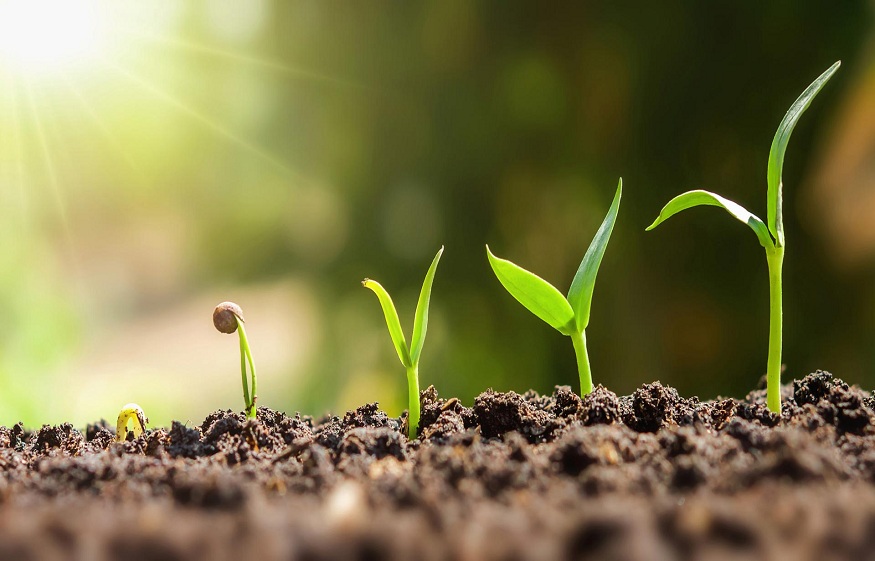Introduction
Autumn leaves signify a lot of things. From announcing the change of seasons to inviting poets and lyricists to write songs and poems. However, autumn leaves can also increase the quality of your topsoil and nourish it. On the other hand, you can search for “topsoil near me” and buy some from the nearest store. Let’s now check out how autumn leaves can help nourish your topsoil.

The Details
1. Shredded leaves
If you don’t want to do much with the autumn leaves, you can simply rake them in one place and put them through a shredder. Those shredded leaves are a valuable resource for the soil. You can add them to your garden beds so that they can decompose and become nutrients for the soil. In the next season, the soil would be full of beneficial microbes and earthworms that boost the growth of your trees. If you decide to add shredded leaves directly to the soil, adding a bit of slow-release fertilizer helps with the decomposition.
2. Compost pile
Another way to improve your topsoil with autumn leaves is by recycling them into compost. If you don’t have a compost bin or pile, the fall season is the best time to start since you have access to ample free resources. To create a compost pile, you can rake all the autumn leaves to a corner and prevent them from blowing away with a chicken wire. Leave it like that along with grass clippings from the lawn and it would slowly decompose over several months to create compost. You can also shred the leaves to speed up decomposition.
To make compost, you need both “brown” matter rich in nitrogen and “green” matter rich in carbon. Grey matter usually constitutes dead plant matter, kitchen waste, and grass clipping and in this case, brown matter constitutes dead and brown leaves. Place a few inches of brown leaves at the corner and cover them up with a couple of inches of green matter like grass clippings to make your compost pile.
You can use compost for fertilizing the soil, changing its structure, improving its drainage, and more. You may need to spray the compost pile with water if it turns dry during the winter. Make sure to turn the pile from time to time. Otherwise, you can optimize the process with a compost bin. A compost bin traps the foul smell and allows you to use everything from wood chips and dead plants to rotting food.
3. Mulch
Autumn leaves can also nourish your soil when used as mulch. Dead and brown leaves are the perfect ingredients for making very productive mulch. Apart from suppressing weeds, mulch made from autumn leaves can also help in retaining soil moisture. There’s no concern for weeds since it’s a clean mulch source that contains no weed seeds.
Chop your autumn leaves into large chunks and spread them around trees, shrubs, and on garden beds as mulch. The mulch prevents new weeds from sprouting out and also decomposes naturally over a long period and delivers their nutrients into the soil. You can also use whole leaves as mulch during the winter. They create a mat that prevents freezing snow and water from reaching the ground and can act as insulation for protecting your delicate perennials.
4. Mow it into the lawn
Autumn leaves aren’t just beneficial for feeding the soil under trees, shrubs, and plants in your garden, but can also boost the vibrance and health of your lawn. It’s also the quickest way of taking care of autumn leaves. Instead of collecting them in one place, use a mulching mower to mulch them onto the lawn.
Those leaves would be crushed into tiny bits and spread all across your lawn so that they can decompose quickly, and the nitrogen can make the glass blades wider and longer. Doing this helps the grass store more food in the roots and helps to make them make a quick recovery after winter.
5. Leaf mold
If compost sounds like too much work and mulching seems too little, you can choose the middle ground with a leaf mold. These are preferred by gardeners across the UK since it allows for optimal use of available yard space. Just bring the leaves to a corner, keep them moist and allow fungi to take over.
After three years, the leaves would disintegrate and turn into a sweet-smelling, crumbly, and gooey compound that is similar to compost. It’s a great amendment for the topsoil in your garden and is high in both magnesium and calcium. You can also make excellent potting soil with this compound.
6. Feed the thriving ecosystem that improves the soil –
Autumn leaves aren’t just useful for humans and plants. They are also very useful for the local wildlife. They are a great source of food for local pollinators like snails, spiders, moths, bees, and arthropods. Autumn leaves on the lawn can also become a shelter for tiny pollinators since they create a warm layer over the cold soil and provide cover against predators.
If you would like to boost the biodiversity in your area, it’s best to leave the autumn leaves in your yard instead of blowing, raking, or piling them up. They become a food source for tiny pollinators that attract birds and other wildlife and all of that wildlife leaves fresh and natural fertilizer on the soil along with beneficial microbes. So, even if you don’t do anything to the autumn leaves, they can nourish the topsoil.
Conclusion
Don’t look at autumn leaves as waste that needs to be cleared off the lawn as soon as they fall down from the tree. They are a valuable resource that can benefit your yard in many ways. It has a lot of nutrients to nourish the soil and help your plants and trees. On the other hand, if you need topsoil for your garden beds, you can buy some from the nearest store after searching for “topsoil near me”.


